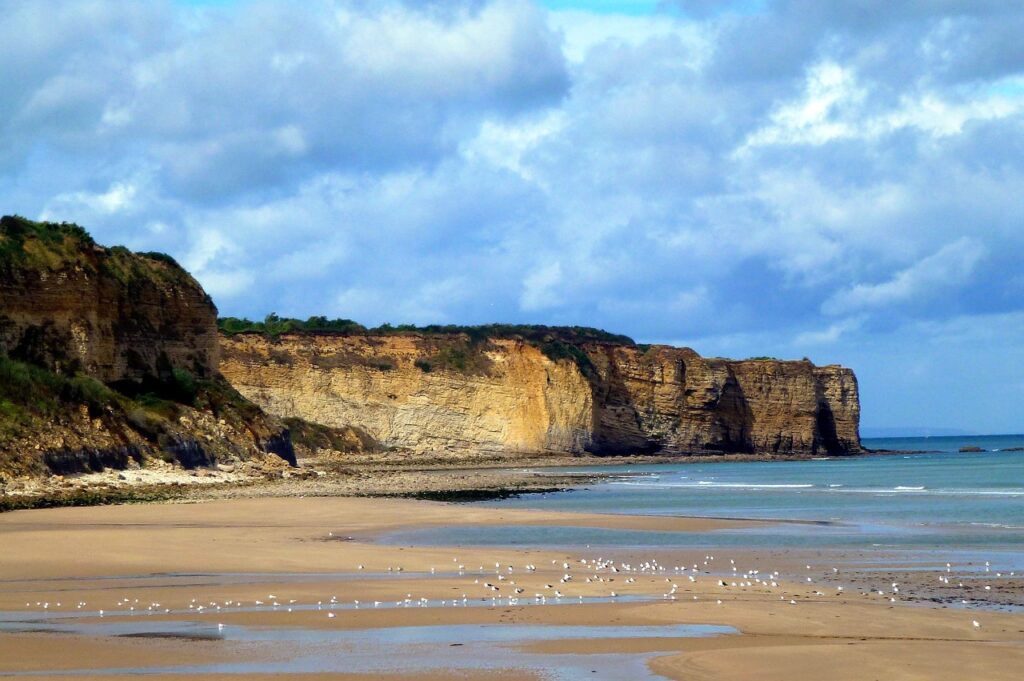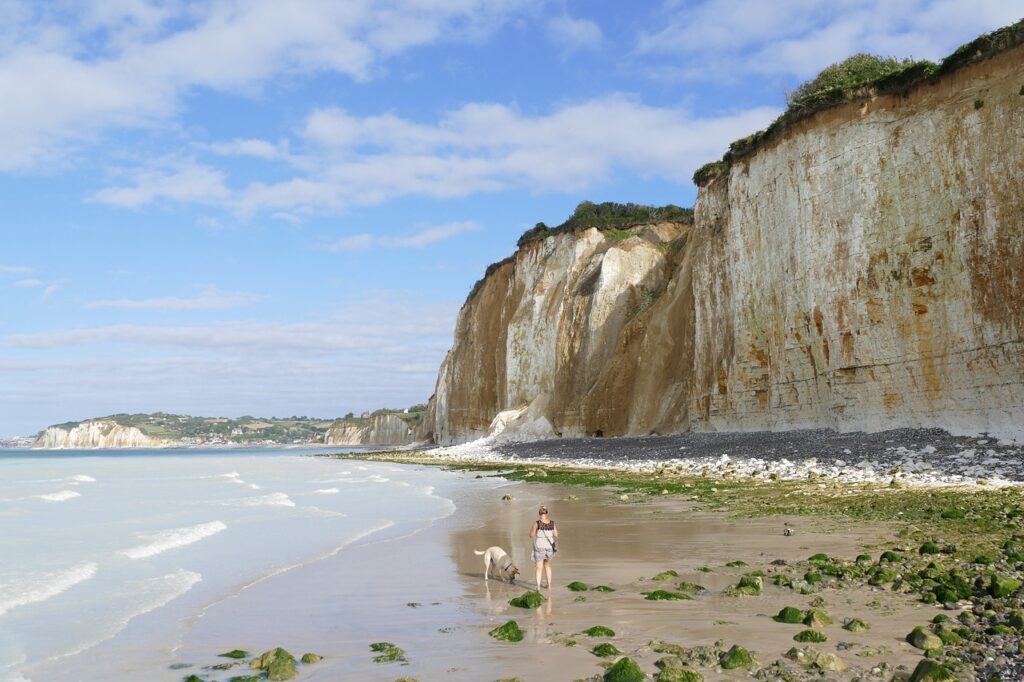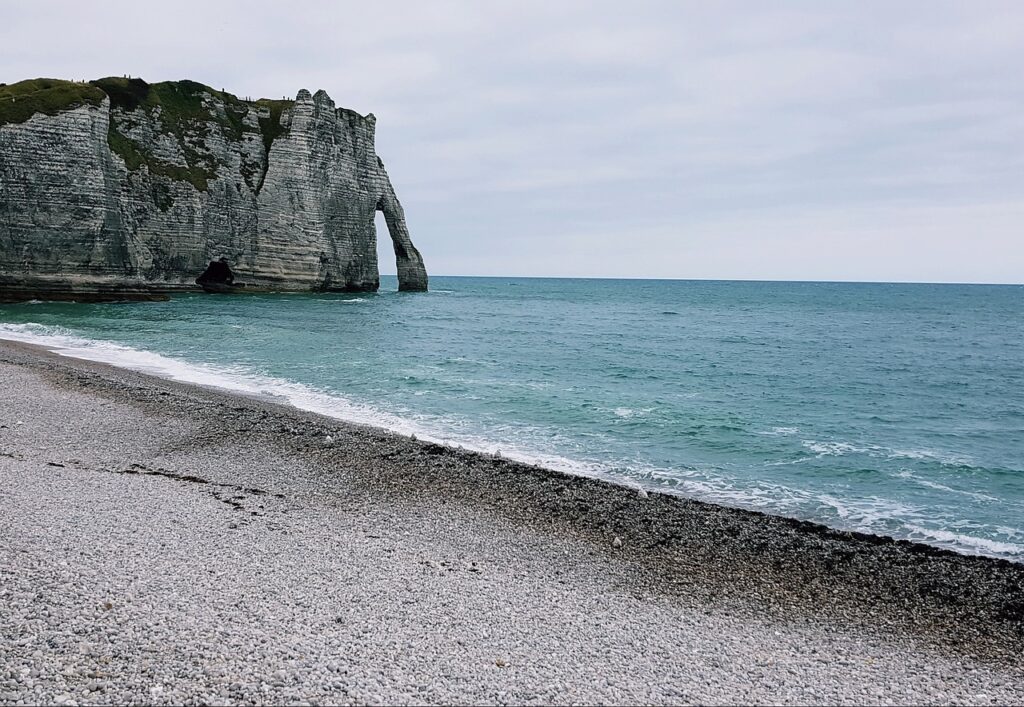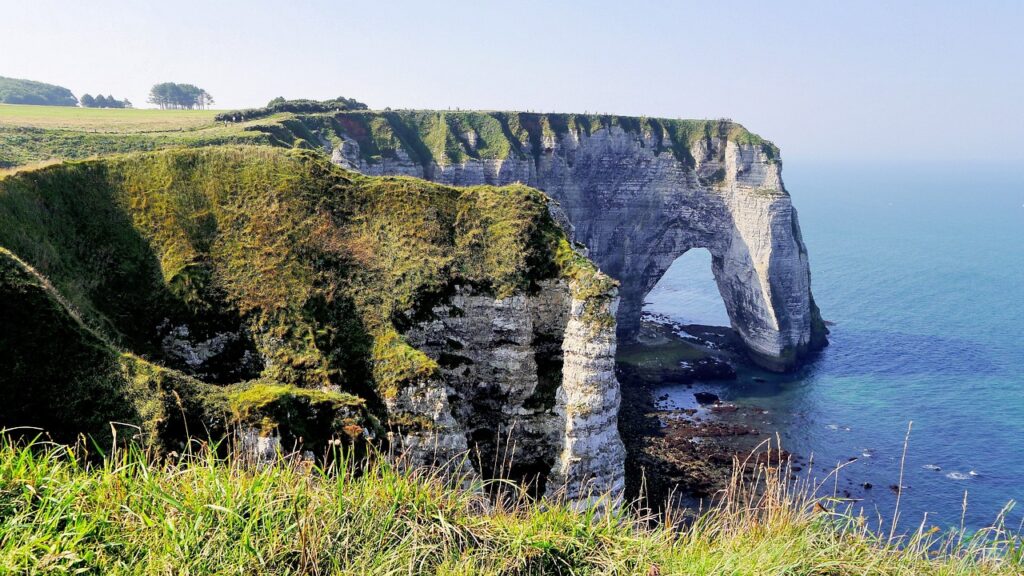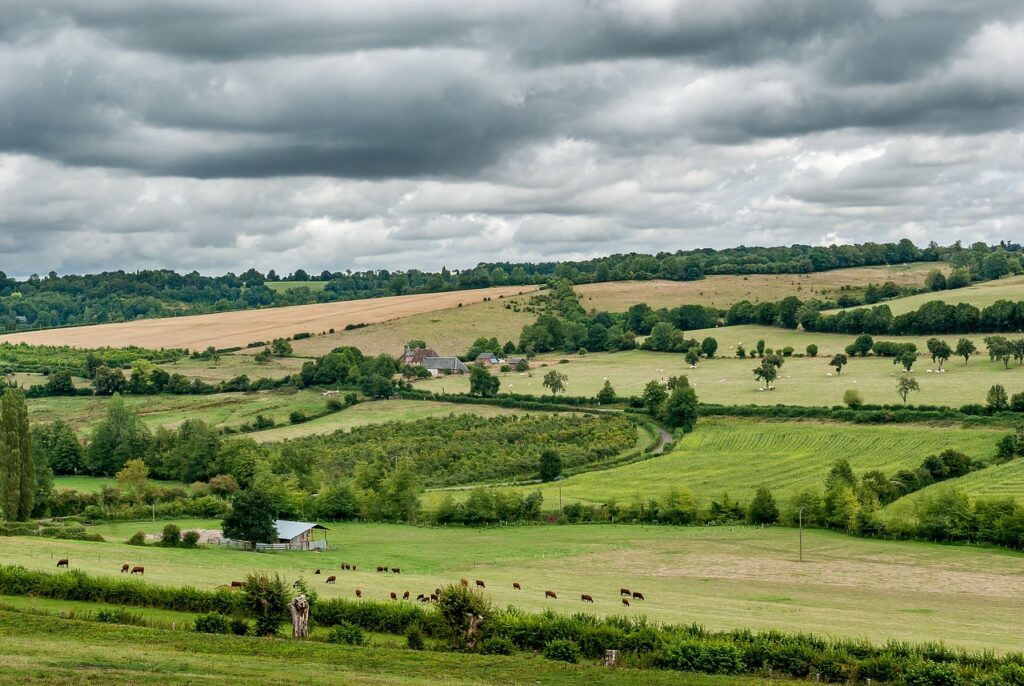Etretat, Honfleur, Bayeux, Mont-Saint-Michel… Normandy is the countryside of Paris.
This is the region of cider and camembert.
It has numerous parks, gardens, castles and abbeys not to be missed, without forgetting the famous Mont-Saint-Michel or the Bayeux Tapestry Museum.

NORMANDY
Intertourisme, specialist in organizing trips to Normandy since 1981
Intertourisme is a company specializing in organizing trips to Normandy. We have extensive knowledge of the area and work closely with local hotels, restaurants and tourist attractions to provide you with a unique and personalized experience.
Whether you’re looking to discover the landing beaches, medieval castles, landscapes of the Normandy countryside or local culinary specialties, our team of professionals are here to help you plan the perfect trip. We also offer competitive rates and 24/7 support to ensure you have a stress-free and unforgettable trip.
Contact us today to start planning your trip to Normandy.
Which places to visit in Normandy?
Normandy is known for its World War II landing beaches, including Omaha Beach and Utah Beach. These historic places are a must-see during a visit to Normandy. You can also visit the Caen Memorial, a museum on the history of war and peace.
The picturesque town of Honfleur, with its charming harbour, half-timbered houses and seafood restaurants is another place not to be missed. Bayeux is also an interesting historical town with its famous eponymous tapestry which recounts the events of the Norman Conquest of England. The cliffs of Étretat offer spectacular views of the sea and the unique rock formations.
Finally, Mont Saint-Michel, a fortified island with a spectacular abbey, is a site not to be missed.
What monuments can we discover in Normandy?
Normandy is a region of France rich in history and cultural heritage, offering many tourist sites for visitors. Among the best-known monuments, we can cite the Rouen Cathedral, a jewel of Gothic architecture; the Bayeux Tapestry, a unique work of art from the 11th century; Mont Saint-Michel, a fortified island and UNESCO World Heritage Site; and the Normandy landing beaches, historical witnesses of the Allied landings of June 6, 1944 during the Second World War.
The region also offers many picturesque castles, such as the castles of Caen and Falaise, as well as charming medieval towns and villages, such as HonfleurandBeuvron- en-Auge.
Normandy’s coastal landscapes also offer beautiful views, with steep cliffs and sandy beaches.
Which villages to visit in Normandy?
Normandy in France has many charming villages to visit. One of the most beautiful is Etretat, famous for its spectacular white chalk cliffs. Rouen is also a stop not to be missed. This historic town boasts a spectacular cathedral, as well as cobbled streets and half-timbered houses.
Honfleur, located on the coast, is a picturesque port town with a bustling harbor and many seafood restaurants. Bayeux is a medieval town, known for its tapestry of Bayeux, a monumental work of art from the 11th century. Giverny, where Monet’s famous house is located, is also a popular destination for art lovers.
Finally, Deauville is a destination of choice for lovers of the beach and the history of the Roaring Twenties.
What are the important places that mattered during D-Day and the Battle of Normandy?
- THE DOVERS-LA-DÉLIVRANDE RADAR STATION
- THE CRISBECQ BATTERY
- MONT CANISY
- CHERBOURG AND ITS LIBERATION
- THE COAST 112
- THE MORTAIN COUNTERATTACK
- THE FALAISE-CHAMBOIS POCKET
- THE TOWN OF VIMOUTIERS
- AUGUST 44: HELL ON THE SEINE
- LE HAVRE
In 1944, on June 6 and during the long summer that followed, men from all over the world came to fight in Normandy to defeat Nazism and restore freedom. Chronologically, in the operation of June 6, 1944, we can distinguish 3 phases: the landing by air (which affects the beaches of Utah to the west and Sword to the east), the aerial and naval bombardments on the Wall of the Atlantic and disembarkation by sea on the 5 beaches (Utah, Omaha, Gold, Juno and Sword) and Pointe du Hoc.
What to drink in Normandy?
Cider, pommeau, calvados, perry and Bénédictine.
Cider: Normandy now dominates French production. The soils, the climate, and the diversity of apple trees, high and low stems, make it possible to produce fruits of exceptional quality. For cider, producers mainly use bitter or bittersweet apples. They are harvested from mid-September. After crushing and passing through the vat, by pressing, a first juice is extracted. Then racking eliminates the last impurities. Fermentation begins. Natural yeasts come into action. The sugar then transforms into alcohol. The magic happens! After bottling, fermentation continues in the bottle.
Calvados: Its production has been documented since at least 1553. The Lord of Gouberville, a gentleman living in Cotentin, wrote in his journal “the distillation of cider with a view to obtaining eau-de -life “. Today, three AOCs supervise and protect production: “Calvados”, “Calvados Pays d’Auge”, “Calvados Domfrontais”. But how do they differ? “Calvados” is the result of distillation in a column still.
For the AOC “pays d’Auge”, double distillation (nearly 18 to 20 hours in a pot still) is required. The geographical area is very limited.
The “Domfrontais” stands out due to the characteristics of the soil (schist and granite from the Armorican massif), the introduction of a minimum of 30% perry and simple distillation. It represents 1% of the total calvados production.
Le Pommeau: the clever blend of cider and calvados
Le Poiré: In the Domfrontais region, more than 100,000 pear trees produce more than 25,000 tonnes of pears per year. The AOC covers a territory of 40 communes in three departments, Manche (Normandy), Mayenne and Orne (Normandy). The “white plant”, a small juicy and tangy pear, is the most commonly used. As with cider, fermentation is slow (between 3 and 4 months), without adding gas. The excitement is natural! Its fine bubbles, its white gold, silvery color, going up to intense gold, its roundness, which contrasts with its tone, will certainly surprise your guests! Our advice: enjoy it in a flute and chilled (10°).
La Bénédictine: Created in 1510 by a Benedictine monk, the recipe apparently disappeared before being rediscovered by a wine merchant, Alexander the Great! Mastering the basics of marketing before his time, he made it one of the best-known liqueurs in the world.
Source: normandie-tourisme.fr

